Paper Doll Rolls the Highlight Reel: Removable Highlighter Tape
THE HIGHLIGHT REEL
Highlighters, of course, aren’t exactly new, though they’re more modern than you may have guessed. It’s hard to imagine that prior to the mid-’60s, students lacked the ability to accent text without obscuring it (and annoy nearby students with the squeaking of the lines being drawn).
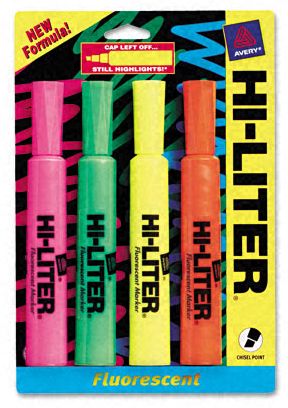
Introduced in 1963 by Carter’s Ink Company under the name Hi-Liter, the original and its descendants were generally felt-tipped pens, cut on the bias, and filled with water-based translucent ink. In the 1970s, office supply experts Avery Dennison bought out Carter, and added fluorescence. Although the most popular color has always been yellow, highlighters often come in pink, orange, green, purple and blue.
In the 1980s, the squeak was minimized, more brands expanded into the highlighter arena, and cute highlighters in various shapes and sizes were introduced to draw the attention of office supply fans and elementary school artistes. In the last decade, 3M came out with Post-it Flag Highlighters, combining two popular methods for accenting text, and highlighter barrels have been narrowed and grips improved to increase the comfort level of users.
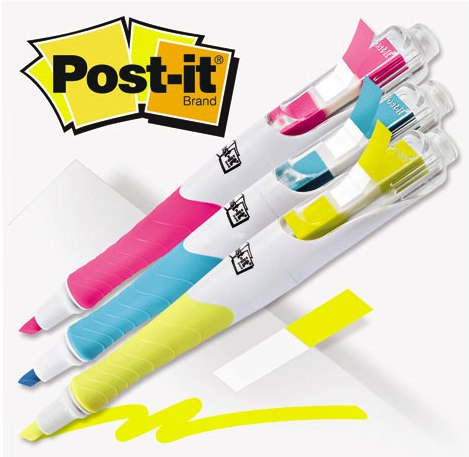
Nonetheless, highlighters hadn’t really changed in a material way in quite some time, and until recently, when I reviewed the Sharpie Gel Highlighter, there wasn’t much new to say. Nanette and I were discussing the mostly fabulous Sharpie Gel Highlighter and our relative experiences.

I assuaged Nanette’s concerns regarding longevity by accenting the not-quite-obvious fact that, as with a lipstick, the base can be turned to advance the gel stick forward. However, we both agreed on one remaining flaw of the Sharpie Gel Highlighter. The cap cannot be firmly stuck to the non-operational end with a satisfying “snap” to ensure the cap won’t be lost.
Still, I noted that it was nice that there was, at least, something new in the world of highlighters, when Nanette dropped the bomb on me. There’s such a thing as removable highlighter tape!
At first, I assumed she meant something akin to correction tape pens, those messy pen/tape combinations which try (but fail) to combine the functionality of Liquid Paper™ with the hands-off convenience of typewriter correction tape.
However, removable highlighter tape is more like traditional transparent Scotch™ tape — it’s translucent, with adhesive on one side, and comes in a roll or on a dispenser — but in fluorescent colors. The low-tack adhesive leaves behind no residue or marks, and you can write on the tape without defacing the item to which it’s affixed. Highlighter tape is available in a variety of widths, so you can highlight one or two lines of text or larger sections of visual focus.
THE MAJOR PLAYERS
There are only a few major players in the world of highlighter tape. Eco-friendly, Minnesota-based Lee Products, in business over 60 years, makes a variety of basic highlighter tapes for office and educational use,

as well as for hobbies and crafting, like Crafter’s Easy See Tape.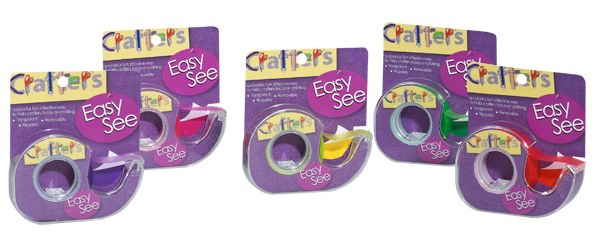
The most popular size is three-line tape, which measures 1/2″ wide, and most rolls are 393″ long. Other sizes include 1/3″ and 1/6″ widths. As with traditional adhesive tape, it’s not pre-cut, so you can use the dispenser blade to select the length you want. List price for Lee Products’ traditional highlighter tapes is $3.25/roll (though less via third-party vendors at Amazon). The Crafter’s Easy See tape runs $5.99/roll.
Wrights’ EZ Tape Go Round comes in 1/4″ and 1/2″ versions, with each roll measuring 3 yards long. It runs about $6-$7 for packages of six rolls. Prices vary from $6.50 to $13.
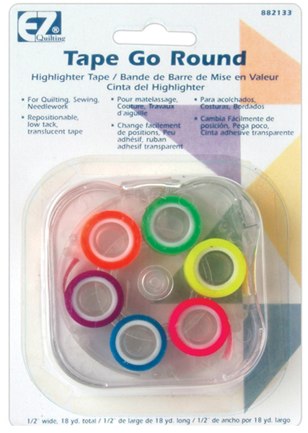
E.Z.C. Fluorescent Highlighter Tape from teacher supply company Really Good Stuff comes in 1/2″ rolls and six traditional colors. Multi-dispenser packs range from $6-$18.


Tempo Tape, from Enterprising Rabbit, measures 12mm wide (slightly less than 1/2″) on 7.5m rolls, and comes in three colors, Sunshine Yellow, Pink Grapefruit and Green Apple. It’s about $7.25 per 3-roll package.

USES FOR HIGHLIGHTER TAPE
Educational
1) Elementary and middle school teachers find myriad uses for highlighter tape. They can highlight vocabulary words, color code to identify different parts of speech, and teach the differences between word parts (like prefixes, suffixes and roots). The bright colors increase interest and improve focus. Similarly, highlighter tape can help in the study of foreign languages, math, geography and all manner of coursework.
2) Novice readers and writers can use highlighting tape to help identify words that present obstacles. Later, they can focus on reviewing the flagged areas with parents, teachers and tutors. Young students can also use the tape to practice tracing over letters and words.
3) Students with learning challenges like dyslexia and Irlen’s (or Scotopic Sensitivity) Syndrome can use highlighter tape to create “tracker” cards and focus on specific lines without distraction. By affixing some highlighter tape to the top of an index card so that most of the highlighting portion extends beyond the card (one layer on each side, so that adhesive sides face one another), the highlighting tape can be used to “track” the sentence currently being read. Creative and insightful blogger Tammy at Confessions of a Fourth Grade Teacher illustrates the use, below:
4) Music teachers, students and musicians can mark specific areas of sheet music to highlight difficult passages or note where careful attention must be paid. Music theory students can color-code particular periods (Baroque, Classical, Romantic, etc.) to improve recall of the eras of musical pieces.
5) College students can use the removable highlighter tape in rented textbooks and in any books which they hope to sell back after the conclusion of the semester.
6) Bible students often find that traditional highlighter pens can bleed through the tissue-thin paper of some Bibles and religious-themed works. Removable highlighter tape can be more suitable for marking words or passages on delicate paper.
Crafting
No matter how creative an endeavor is, it usually requires some degree of measurement and the ability to follow a design or pattern.
7) Tailors, seamstresses and sewing hobbyists, as well as
8) Knitters can highlight sections of patterns and color-code instructions to guide themselves through intricate steps and changes in stitch types.
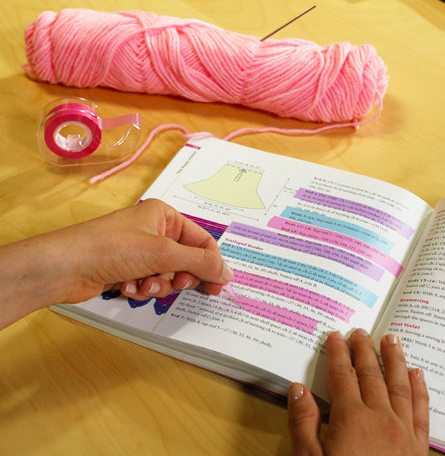
9) Needlecrafters can use highlighter tape to keep their places in needlepoint and cross-stitch charts. Highlighter tape is an improvement over flags and sticky notes because the tape won’t obscure any elements from view.
10) Woodworkers can use the brightly-colored highlighter tape to mark areas to cut, screw or nail without marking the actual wood with a pen, pencil or chalk.
Work
11) Physicians, dentists, counselors and other medical professionals can use highlighter tape to spotlight allergies, emotional triggers and other vital concerns in a patient’s chart.
12) Attorneys, paralegals and legal secretaries might employ highlighter tape to focus attention on key words or phrases for discussion in court, during depositions and in negotiations.
13) Pilots and sailors may mark their navigational charts with highlighter tape to identify key directional changes and potential obstacles.
14) Overwhelmed workers can prioritize their duties by color-coding tasks and obligations with highlighter tape. (Similarly, parents can help children prioritize tasks on their chore charts.)
Life
15) Cooks must sometimes maneuver through complex or difficult culinary instructions. Highlighter tape provides a way to brightly accent sections of cookbooks with small or hard-to-read printing. Legacy cookbooks passed down through generations tend to have delicate pages, and highlighter tape offers a useful way to both augment and preserve them without scribbling across the blank sections.
16) Visitors with low vision and children who are still learning to read may have difficulty in unfamiliar environments. Accent a mailbox number or the right apartment buzzer with highlighter tape in your visitor’s favorite color.
17) Busy parents and professionals can employ highlighter tape in their paper planners to color code events and obligations; similarly, a color scheme can be used on full-sized family calendars to note activities involving specific family members.
18) Book club members might use highlighter tape to accent passages they intend to discuss at group meetings. Use highlighter tape in books borrowed from friends or the library so you can return them in pristine condition.
In what ways might you use highlighter tape? Please highlight your areas of expertise and share in the comments section, below.
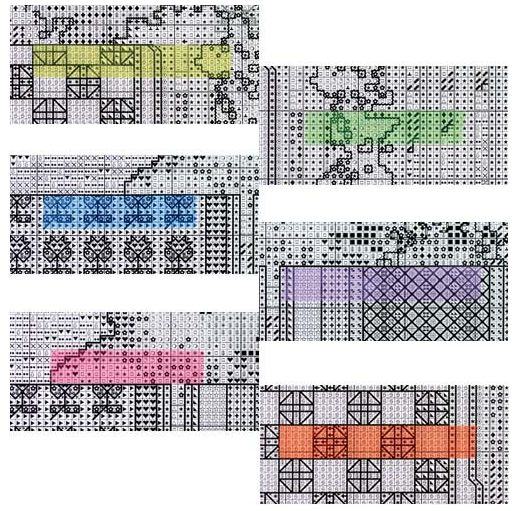




I have to say that for the past few of hours i have been hooked by the impressive articles on this website. Keep up the good work.